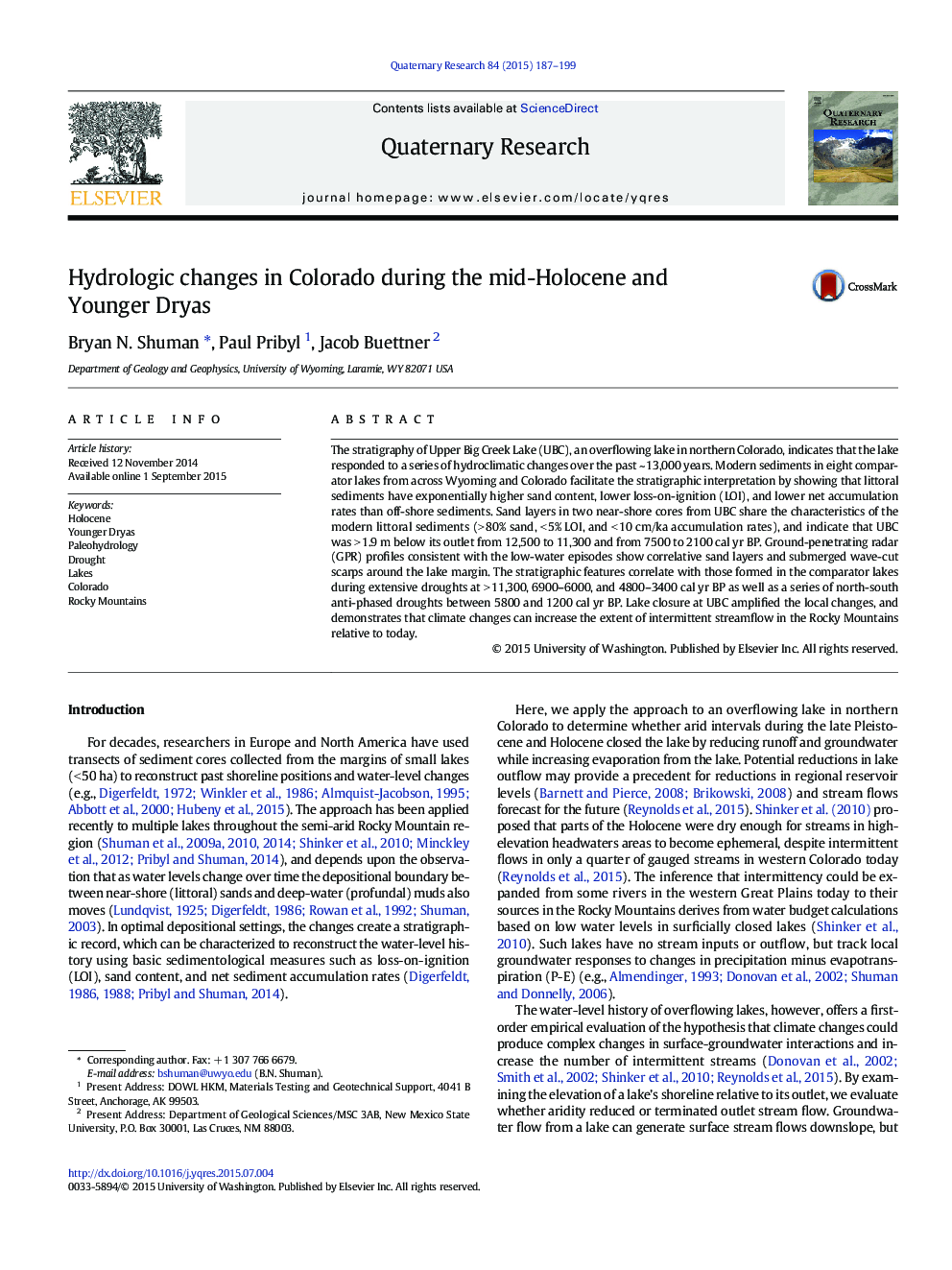| Article ID | Journal | Published Year | Pages | File Type |
|---|---|---|---|---|
| 1045112 | Quaternary Research | 2015 | 13 Pages |
Abstract
The stratigraphy of Upper Big Creek Lake (UBC), an overflowing lake in northern Colorado, indicates that the lake responded to a series of hydroclimatic changes over the past ~ 13,000 years. Modern sediments in eight comparator lakes from across Wyoming and Colorado facilitate the stratigraphic interpretation by showing that littoral sediments have exponentially higher sand content, lower loss-on-ignition (LOI), and lower net accumulation rates than off-shore sediments. Sand layers in two near-shore cores from UBC share the characteristics of the modern littoral sediments (> 80% sand, < 5% LOI, and < 10 cm/ka accumulation rates), and indicate that UBC was > 1.9 m below its outlet from 12,500 to 11,300 and from 7500 to 2100 cal yr BP. Ground-penetrating radar (GPR) profiles consistent with the low-water episodes show correlative sand layers and submerged wave-cut scarps around the lake margin. The stratigraphic features correlate with those formed in the comparator lakes during extensive droughts at > 11,300, 6900-6000, and 4800-3400 cal yr BP as well as a series of north-south anti-phased droughts between 5800 and 1200 cal yr BP. Lake closure at UBC amplified the local changes, and demonstrates that climate changes can increase the extent of intermittent streamflow in the Rocky Mountains relative to today.
Related Topics
Physical Sciences and Engineering
Earth and Planetary Sciences
Geology
Authors
Bryan N. Shuman, Paul Pribyl, Jacob Buettner,
